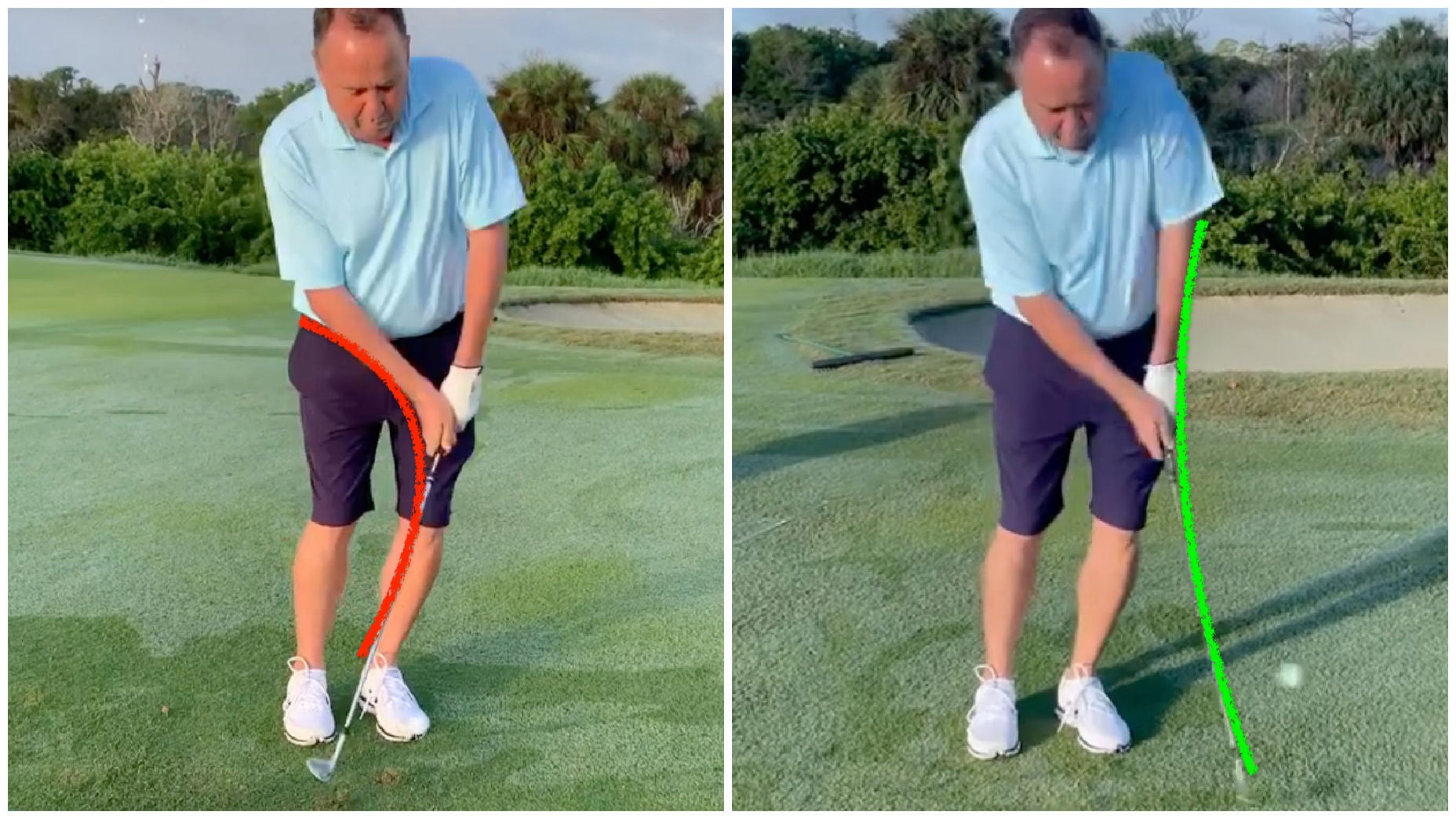
Deliberate practice, with lots of slow-motion rehearsals, were the keys to improving Mike’s technique.
Welcome to our new series, golfer-to-golfer, where we try to learn from all different kinds of avid players out there, in hopes that the rest of us can take away something that might improve our own games.
This week, we’re talking with Mike Carroll, the man behind the highly regarded Fit For Golf app, who shares some tips on how we went from a 5 handicap to a +1 in one year.
This Q and A has been lightly edited for clarity and brevity.
Luke Kerr-Dineen: Mike, I’d love to start by learning about your background in golf. How’d you start playing?
Mike Carroll: I started playing golf when I was about 10, growing up in Ireland. There was a local pitch-and-putt near me that I’d go to all the time. I got my first set of clubs for my 12th birthday, so I played a lot from the ages of 12 to about 17, but then I didn’t play at all from when I was 17 to about 22. I just got frustrated. I was putting too much pressure on myself and thought I wasn’t getting as good as quickly as I would’ve liked. I picked it up again after college and I was terrible compared to what I used to be. I literally had the yips with anything that wasn’t a full shot.
LKD: But we already know this story has a happy ending, so what changed?
MC: Two things. The first was when the pandemic hit, it meant that I couldn’t really train people in person in the gym anymore, so it opened up a lot more time during the day when I could practice and play. But then as I started playing more, I just started getting sick of my own game. I’d often shoot in 80s, even in the mid-80s. I was playing off a 5.1, but I’d only entered 20 rounds in the previous two years, so it wasn’t even that accurate. So I decided to challenge myself: How quickly can I get to a scratch? About a year later, I had gotten my index from 5 to +1.1.
LKD: Alright, let’s dig into that. You’ve challenged yourself to do this. Where did you start?
MC: I downloaded the Golf Metrics app and was really diligent about keeping all my stats. I knew I was really, really struggling with my wedge game — literally anything that wasn’t a full shot I had horrors, from duffs to skulls and general anxiety. Seeing my strokes gained for my wedge game was a real horror, so that’s what I started working on right away. Improving my technique, improving my confidence. I practiced them all the time starting with the smallest chips and working my way up. There was definitely ups and downs in that, times when I felt like I was getting better, and times when I felt I was regressing. But I just kept at it, just trying to get enough positive experiences so I learned to love them.
LKD: So you’re tracking your stats and working really hard on your wedges, what else became a high priority for you?
MC: Because of my background playing Gaelic Football in college, I’ve always been quite good athletically, which meant I was about at or just above tour average clubhead speed. But obviously I was nowhere near tour average driver dispersion. I was really struggling to keep my driver in play, and I had this miss that would start left and curve left. And at the speed I was swinging on these muni courses, it’s just a nightmare, because it’s going to go so far offline into the trees and bushes. When I look back, my irons and putting got a little better, but the two really big things were getting my wedges from being horrendous to quite good, and improving my driving accuracy.
LKD: Technique-wise, what did you start working on in your full swing?
MC: The main thing for me was that I had a very, very inside takeaway, so my hands would go out and my clubhead would whip inside a lot. I was very flat on the way back then very steep on the way down, which meant I had to stand up quickly and release my hands quite early. When it went wrong, the ball would start left and curve left. So I started picking the brain of some golf teachers and really started looking at the checkpoints: Setup, shaft parallel on the way back, top of the backswing, shaft parallel on the way down, and impact.
LKD: Now that you know what to practice, what did your practice sessions look like?
MC: I practice a little differently than most people. Literally every single range session I’ve done in the last two years, I’ve set up a camera and tripod and left it there. I have about a thousand swings in my phone, slow motion swings of me from different range sessions from two years ago. Once that was set up, lots and lots of practice that I did was slow motion, exaggerated rehearsals to try and feel the changes. I might hit 30 balls in 50 minutes because I’d do slow motion swings, check the camera, and if I didn’t like what I was seeing I’d make some more exaggerations. A lot of the balls I hit were reduced speed, and I’d gradually build up. I’d also put one alignment rod down the target line, and one down my foot line, to make sure my alignment was always good.
LKD: It clearly helped, but did you find practicing like that a little tedious?
MC: Not really. I’m a very analytical person, and I was really, really excited when I could see that my swing was changing. I saw a direct correlation between how my swing started looking on camera and how my ball striking improved. When I’m on the course, that’s my time to just play.
LKD: How often would you practice, play, and work out? What did a normal week look like for you?
MC: I’d say over the past two years, I’ve practiced or played about 80 percent of those days. I played about 70 rounds last year. I try to play 18 holes once or twice a week, and the days I don’t play I practice. I’m generally on the range for about an hour, maybe an hour and a half tops. I go to the gym three days a week, and the gym and range are all in a nice little route from my apartment. It’s basically become my 7 a.m. to 11 a.m. routine most days.
LKD: What are you doing in the gym?
MC: Three sessions a week, and in all of those sessions I do a little bit of lower body, a little bit of trunk or core, and a little bit of upper body. The important thing golfers need to know are that there are three sections to each workout. The first section is dynamic mobility and warmup exercises: lunges, squats, stuff for the hips, spine, torso and shoulders. The second is all speed, or power. These are lightweight, high-speed exercises. Things like jumps, medicine ball slams, band pulls, thinks like that. The third is strength work: squares, deadlifts, bench presses, pull ups.
LKD: Before I let you go, what would your advice be in a nutshell, to the golfer who may be reading this that wants to learn from your game improvement journey?
MC: So, obviously, if you’re coming to me, I’m going to tell you to look at their physical conditioning. Getting lessons from a coach to improve their technique is important and something they should do, but improving your mobility and your strength levels will make everything you’re trying to do in your golf swing easier. And even if you don’t get your swing technique to exactly where you want to, if we take a 50 year-old who’s working a desk job, their swing will get better from getting more mobile and strong. Even if they don’t do anything with their swing, doing the right physical training may increase their clubhead speed by five or more miles per hour, which will help. If they’re a little less stiff and wooden by the time the weekend comes, they’ll be a bit better.












